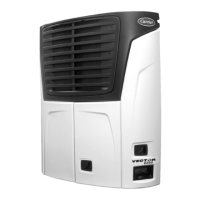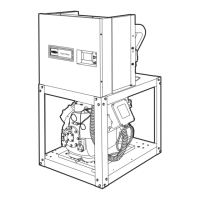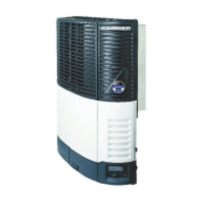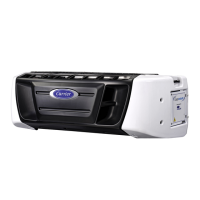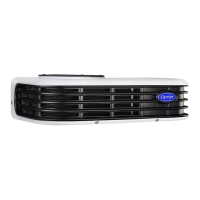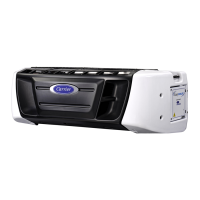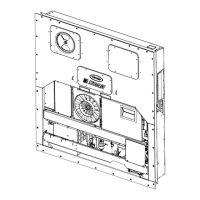62-61753-21
98 CHECK HIGH TEMP THERMOSTAT (EVHTS)
TRIGGER-ON: With the SROS in the START / RUN position the EVHTS circuit is open.
UNIT CONTROL: Alarm AND no heat allowed.
RESET CONDITION: Auto Reset when the EVHTS circuit is closed for 15 minutes, or alarm may be
manually reset via keypad or by turning the unit off, then back on again.
NOTE: Follow the steps below until a problem is found. Once a repair or correction has been made, the active
alarm should clear itself (refer to reset condition above). Operate the unit through the appropriate modes to see if
any active alarm occurs. Continue with the steps below as necessary.
Check Evaporator Area For High Temperature
a. Check Evaporator temperature
using a test thermometer.
EVHTS opens when the temperature of the evaporator
becomes very high (Refer to Section 2.10 for settings).
(For example, if the heaters are on when the fan is not
running.)
a. Inspect switch & connector pins &
terminals. (See wiring schematic
Section 10.)
No physical damage to harness.
No damaged or corroded pins.
b. Check switch circuit
Check for voltage at the switch
plug between pins A (+) and B
(ground).
Energize circuit (refer to Note 2 Page 7-2).
Voltage should be approximately 12 VDC.
a. Contacts must be closed when
temperature is normal. Unplug
EVHTS and check for continuity.
Must be 0 (zero) Ohms. Cannot be opened (infinite
ohms) or shorted to ground.
99 CHECK STANDBY (POWER SUPPLY CONTACTOR RELAY) COIL
TRIGGER-ON: Power Supply Contactor Relay (PSCONR) current is excessive.
UNIT CONTROL: Engine and standby operation: alarm only.
RESET CONDITION: Auto Reset when the PSCONR Coil current draw is normal, or alarm may be
manually reset via keypad or by turning the unit off, then back on again.
NOTE: Follow the steps below until a problem is found. Once a repair or correction has been made, the active
alarm should clear itself (refer to reset condition above). Operate the unit through the appropriate modes to see if
any active alarm occurs. Continue with the steps below as necessary.
a. Inspect relay coil and terminals.
No damage to coil.
No damaged or corroded pins.
b. Check relay coil resistance.
Refer to Section 2.12. Cannot be opened (infinite
ohms), shorted (Zero Ohms) or shorted to ground.
Check PSCONR Current Draw
a. Use Component Test Mode to test
actual current draw of the coil. (Re-
fer to Section 5.1.2.)
Component FET or board LED (refer to Table 5-1)
must be illuminated.
View current draw in Data List.
Refer to Section 2.12 for normal current values.
a. Inspect harness & control box
connector pins & terminals. (See
wiring schematic Section 10.)
No physical damage to harness.
No damaged or corroded pins.
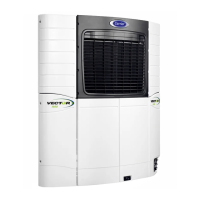
